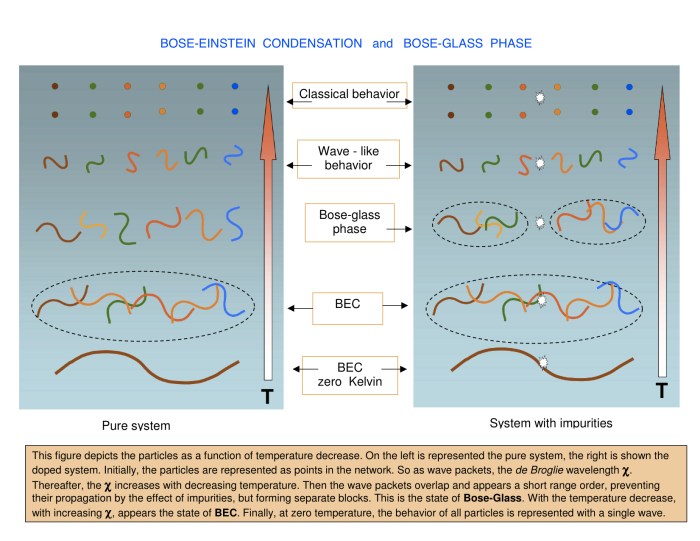Bose-Einstein condensation occurs when a system of quantum-mechanical particles with integer spin or angular momentum is cooled to its ground state and forms a coherent state of identical particles. The Bose-Einstein condensate (BEC) occurs in systems that satisfy two requirements: bosonic behavior and number conservation. It is this second requirement that limits the prevalence of BEC systems in nature. BECs were first identified in dilute collections of laser-cooled cold atoms in 1995, leading to the Nobel Prize. We have been studying BECs in quantum magnets. When quantum magnets obey certain symmetries, long-range magnetic order of the spins occurs that is analogous to BEC. Unlike collections of cold atoms, BEC occurs in these quantum magnets at temperatures up to fractions of a Kelvin. The systems are in the thermodynamic limit of large numbers of bosons, thus their thermodynamic properties can be studied in detail and the boson number can be precisely tuned with magnetic field.

Recently we focus on the compound NiCl{2}- 4SC(NH{2}){2}, (DTN), in which a magnetic field induces long-range order of the Ni S= 1 moments between magnetic fields of Hc1 ~ 2 and Hc2 ~12 Tesla. The spins obey an axial symmetry for magnetic fields along the c-axis, which causes the antiferromagnetic order to become analogous to a Bose-Einstein Condensate. We use a magnetometer to operate in a 3He refrigerator and 17 T magnet system and then showed that the magnetic field tunes the boson density, and the spin system undergoes a second-order phase transition from zero to finite boson density. Measurements down to 1 mK show an agreement with the predictions of BEC.
When disorder is introduced in a magnet with interacting bosons, the condensate disrupts and interferes with phase coherence. The result is the creation of a peculiar state, the Bose-glass phase (BG), with only short-range correlation. Experimental and theoretical studies were realized in the disorder quantum magnet NiCl{1-x}Br{x}- 4SC(NH{2}){2}, DTN/Br. The remarkable agreement between theory and experiment shows a well-controlled realization of a disordered Bose fluid with a new seemingly universal exponent governing the scaling of the critical temperature from BG to BEC.
Part of this work was performed at the Laboratório de Estado Sólido e Baixas Temperaturas where this compound was first magnetically characterized. The measurements down to 1 mK were carried out at the National High Magnetic Field Laboratory in Gainesville and at the Los Alamos National Laboratory, EUA. The theoretical study was conducted at the National Center for Computational Sciences, EUA.


